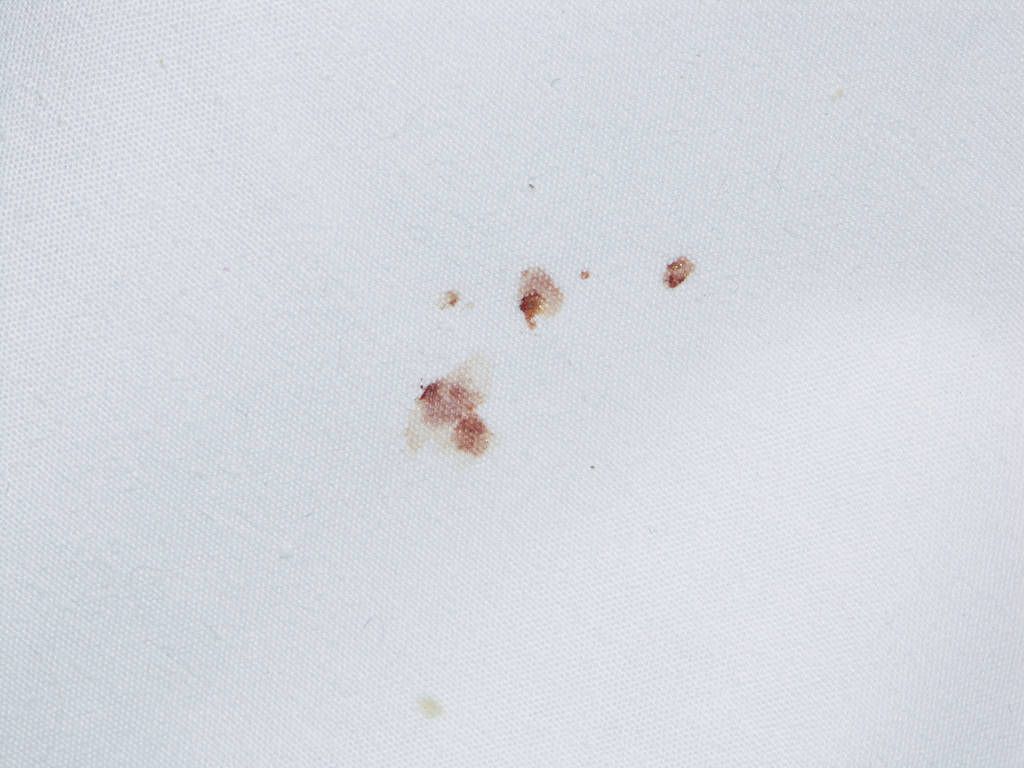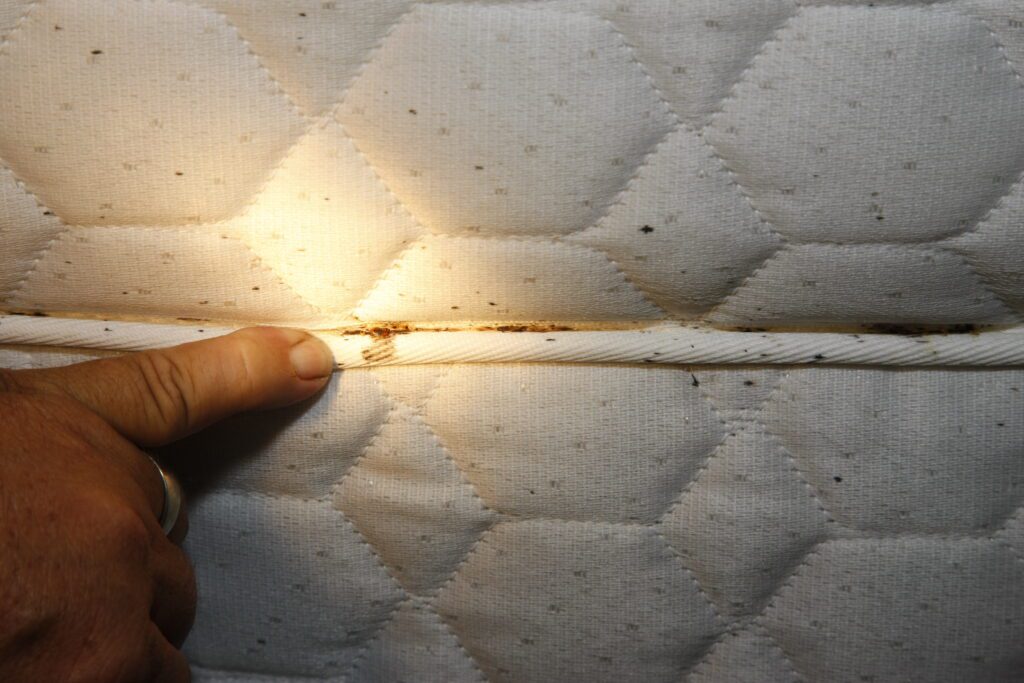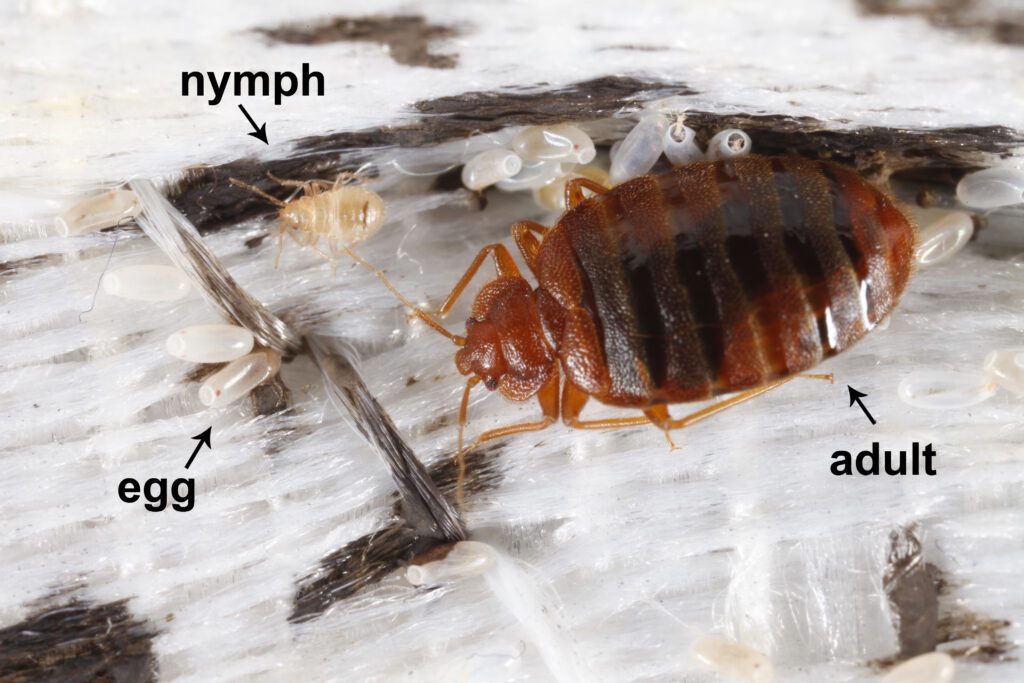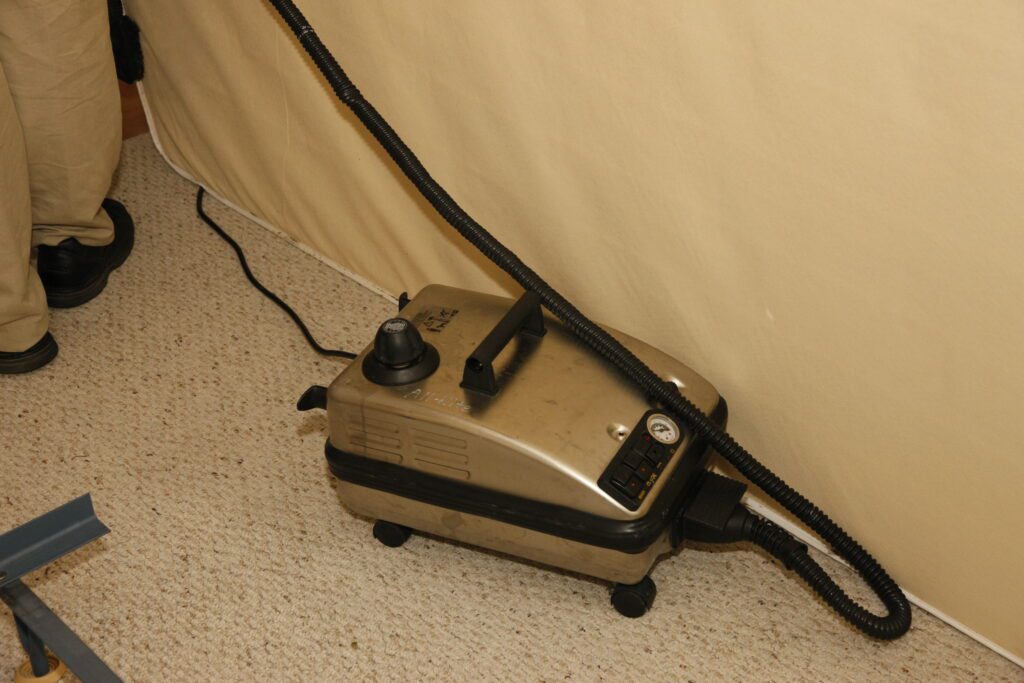Introduction:
Bed bugs, the tiny, elusive pests that have haunted households for centuries, are famous for leaving unmistakable signs of their presence. One of the most telling signs? Blood stains. While these tiny insects might be adept at hiding in the nooks and crannies of our homes, the stains they leave behind on sheets, beds, and even pajamas can be a clear indicator of an infestation. Let’s dive into Bed Bug Blood Stains: How to Identify, Treat, and Prevent Them.

These stains, often overlooked or mistaken for something else, are critical in early detection and prompt treatment. This is your complete guide to understanding bed bug blood stains: how to identify them, why they appear, and most importantly, how to deal with them.
With the rising global incidents of bed bug infestations, knowledge is your best weapon. So, as you embark on this informative journey, remember that the first step in combating these bothersome bugs is recognizing their telltale marks. By equipping yourself with the useful information shared in this guide, you’ll be well on your way to a peaceful, bed bug-free sleep.
Identifying Bed Bug Blood Stains
Venturing into the world of bed bugs can be quite nerve-wracking. Especially when confronted with the task of indentifying their silent yet prominent signs. Bed bug blood stains are unique, presenting characteristics that differentiate them from typical stains you might encounter. Often rust-colored to dark brown, these stains can vary in size, but usually appear as small, dot-like smudges or streaks.

They primarily show up on bed linens, pillowcases, and mattress corners, marking spots where these pests have fed or been unintentionally squashed post-feeding. Now, you might wonder, “Aren’t there other stains that look eerily similar?” Certainly! Accidental spills, sweat, or even certain foods can leave marks that might confuse an untrained eye. However, understanding the specifics of bed bug stains ensures you won’t be barking up the wrong tree.
Early detection is important. Catching these critters in the initial stages can save you a heap of trouble, both mentally and financially, down the line. As you familiarize yourself with these stain signatures, you’re one step closer to reclaiming your sanctuary from these unwanted invaders.
Understanding Bed Bug Behavior
Learning more about the life and habits of bed bugs gives us really important information that’s super useful when we want to get rid of these annoying pests. Even though they are really small, these bugs act in special ways that make them tough opponents in our homes. The way they live revolves around how they get their food. Because they really want blood to survive, these bed bugs mostly choose to bite humans. They like our warmth and the carbon dioxide we breathe out. When it’s dark outside and we’re fast asleep, these bugs come out to feed without us noticing. This makes it tricky to catch them.

Beyond their feeding rituals, understanding the bed bug life cycle offers a clearer picture of their resilience and rapid spread. From tiny translucent eggs to reddish-brown adults, these pests progress through various stages, each one presenting its own set of challenges for eradication. Additionally, their astonishing reproduction rate can lead to a full-blown infestation in a short span if left unchecked.
By grasping the details of their behavior, from their nightly feasts to their prolific breeding, you’re not only better informed but also better equipped to halt their invasion at its roots.
Removing Bed Bug Blood Stains
Once identified, the next logical step is addressing those unsightly bed bug blood stains that mar the aesthetics of your bedding. Here’s where science meets practicality. The materials you’ll need aren’t hard to come by. Most can be found in the average household or at a nearby store. From enzyme-based cleaners to gentle detergents, the arsenal against these stains is diverse and effective. The process usually commences with a pre-treatment, applying a solution to loosen the stain’s grip on fabric fibers. Hydrogen peroxide is a good option for removing blood stains from fabric. Just make sure to test a section for bleaching or staining beforehand.
Following this, specific stain removal techniques come into play, whether it’s gentle scrubbing, soaking, or even a combination of both. It’s essential to proceed with caution, especially with delicate fabrics that demand a softer touch.
Think of silk sheets or heirloom linens passed down through generations. They require a method that’s both effective against stains and gentle on the material. Once the stain is out, a thorough rinse and proper drying ensure that the fabric retains its integrity and freshness. By the end of this stain-busting journey, your sheets and mattresses won’t just be free of bed bug traces, they’ll also be clean, fresh and ready for a good night’s sleep.
Preventing Future Bed Bug Infestations
Knowledge of past invasions serves as the bedrock for building robust defenses against future bed bug infestations. One might ask, “How often should I check for these unwelcome guests?” Regular inspections, perhaps once a month or whenever you change bed linens, can be your first line of defense. Utilizing a flashlight or a magnifying glass can enhance the precision of these inspections, revealing even the most well-hidden bugs or their tiny eggs. Maintaining a pristine sleeping environment also plays a pivotal role. Bed hygiene is not just about cleanliness; it encompasses practices like vacuuming the mattress, washing linens in hot water, and even rotating the mattress periodically. For those seeking an added layer of protection, investing in mattress and pillow protectors can create a barrier against these pesky invaders.
The fight doesn’t end at home; it extends to our travels as well. Being vigilant when staying in hotel rooms, inspecting the room, and adhering to certain packing rituals can significantly reduce the risk of bringing these bugs back home. Remember, prevention isn’t merely an act; it’s a continuous commitment to safeguarding your sanctuary.
How to Check a Hotel for Bed Bugs. Are there Bed Bug Blood Stains?
Start by placing your luggage on a non-upholstered surface, preferably the bathroom floor or a tiled area. This ensures that if there are bed bugs present, your belongings remain uncontaminated. With a flashlight in hand—many smartphones have one built in—begin your inspection at the bed. Pull back the linens and meticulously examine the mattress seams, especially the corners. Look for tiny rust-colored stains, translucent eggs, or even the bugs themselves. Extend your search to the bed’s headboard, box spring, and bed frame.
But don’t stop there. Check the bedside tables, upholstered furniture, and even the edges of the carpet. Look out for tiny dark spots (bed bug feces), shed skins, or the insects in any stage of their life cycle. If you find any signs, alert hotel management immediately. Request a different room, and ensure it’s not adjacent to or directly above or below the infested one. Remember, a few minutes spent inspecting can save you days of discomfort and hassle. Ensuring your travels remain delightful and bed bug-free.
Seeking Professional Help
There are moments in the battle against bed bugs where even the most diligent efforts fall short. When DIY solutions and preventive measures don’t yield the desired results, it might be time to summon the cavalry: professional exterminators.
Recognizing when to make that call is vital. Persistent stains, bite marks that keep reappearing, or visible sightings of the pests even after treatments can be clear indicators that professional intervention is required. But it’s not just about calling the first exterminator listed in the directory.

The efficacy of bed bug treatments largely hinges on the expertise of the service provider. Seek out exterminators with positive reviews, relevant certifications, and a history of successfully tackling bed bug issues. Before committing, inquire about their treatment methods. Are they chemical-based or heat treatments? How long is the process? Do they offer post-treatment follow-ups? Opting for a reliable exterminator can not only ensure that the infestation is thoroughly addressed but can also provide peace of mind, knowing that your living space is truly free from these nocturnal nuisances. In the realm of bed bug combat, professional exterminators are the seasoned warriors, equipped with the tools and knowledge to reclaim your home.
Conclusion
Bed bugs, often likened to stealthy nocturnal invaders, present challenges that stretch beyond mere nuisance to impacting the quality of life. From their surreptitious feeding habits to their adeptness at hiding, these pests test our patience, vigilance, and determination. Yet, with the right knowledge, tools, and strategies, they are entirely surmountable challenges.
This comprehensive guide has journeyed through the signs, habits, treatments, and preventive measures associated with bed bugs, illuminating the path to a bug-free existence. As we wrap up, it’s essential to remember that the fight against bed bugs is as much about proactive prevention as it is about reactive solutions.
Early detection, prompt action, and continuous vigilance form the triumvirate of successful bed bug management. Your home, your sanctuary, deserves to be free from these unwelcome guests. So, armed with this knowledge and a proactive mindset, march forward with the confidence that peaceful, undisturbed sleep is entirely within your grasp.




